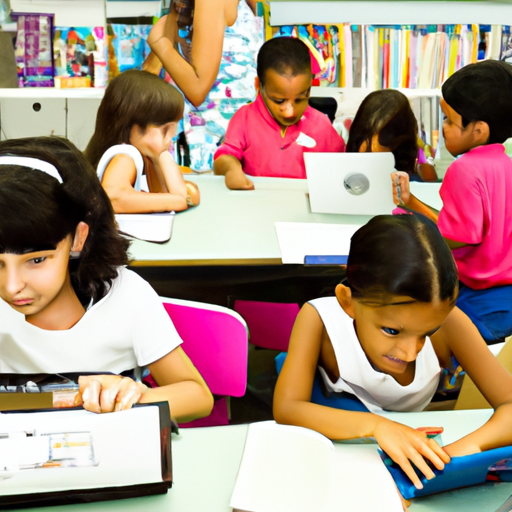In this article, you will learn about the education system in Miami. We will discuss the structure, curriculum, and opportunities available to students in this vibrant city. Whether you are a parent considering moving to Miami or simply curious about its education system, this article will provide you with valuable insights. So, let’s dive in and explore the educational landscape of Miami together.

Overview of Miami’s Education System
Miami’s education system is made up of several school districts, each with its own set of schools and programs. The three main school districts in the Miami area are Miami-Dade County Public Schools, Broward County Public Schools, and Palm Beach County School District. These districts serve a diverse student population and offer a variety of educational options.
School Districts
Miami-Dade County Public Schools is the largest school district in the area, serving over 350,000 students. It has a wide range of schools, including elementary, middle, and high schools, as well as specialized magnet schools and vocational programs.
Broward County Public Schools is the second-largest school district in Miami, with around 270,000 students. It also offers a variety of educational options, including traditional schools, magnet programs, and career and technical education.
Palm Beach County School District is the third-largest district in the area, serving over 190,000 students. It is known for its focus on innovation and choice, offering a variety of specialized programs and schools.
School Types
In Miami, students have the option to attend public schools, charter schools, or private schools. Public schools are funded by the state and offer education free of charge to students. Charter schools are public schools that operate independently and have more flexibility in their curriculum and teaching methods. Private schools, on the other hand, are not funded by the state and require tuition payments.
Enrollment Statistics
Miami has a large student population, with hundreds of thousands of students enrolled in its schools. The total enrollment in Miami’s public schools is over 800,000 students, with Miami-Dade County Public Schools having the largest enrollment.
In terms of demographics, Miami’s student population is diverse, reflecting the multicultural nature of the city. The student-teacher ratio varies across schools and districts but is generally in line with national standards.

Curriculum
The curriculum in Miami’s schools focuses on core subjects such as math, science, language arts, and social studies. In addition to these core subjects, students have the opportunity to take elective classes and participate in extracurricular activities.
Electives and extracurriculars vary across schools and districts, but common options include art, music, physical education, and foreign languages. Miami also offers special programs, such as gifted and talented education, English language learner support, and special education services.
Quality of Education in Miami
Miami’s education system strives to provide a high-quality education to all students, but the quality of education can vary across schools and districts. Academic performance in Miami’s schools is measured through various assessments and standardized tests.
Graduation rates in Miami’s schools have been improving in recent years, with the majority of students graduating on time. However, there is still work to be done to ensure that all students are prepared for post-secondary education or the workforce.
Standardized testing is used to measure student achievement and provide information on school performance. Miami’s schools are held accountable through these tests, with efforts being made to close achievement gaps and improve overall performance.
Challenges in Miami’s Education System
Miami’s education system faces several challenges that impact the quality of education provided. One of these challenges is funding issues, as schools often struggle to secure enough resources to meet the needs of their students. This can lead to a lack of necessary materials, outdated facilities, and limited extracurricular opportunities.
Another challenge is the achievement gap, which refers to the disparities in academic performance among different groups of students. Miami has a diverse student population, and efforts are being made to address these disparities and ensure that all students have access to high-quality education.
Language barriers are also a challenge in Miami’s education system, as many students are English language learners. Schools are working to provide support and resources for these students to help them succeed academically.
Efforts to Improve Miami’s Education System
The school districts in Miami are implementing various initiatives to improve the education system. These initiatives focus on reducing class sizes, providing professional development opportunities for teachers, and offering comprehensive support services for students.
Community partnerships play a crucial role in improving Miami’s education system. Non-profit organizations, businesses, and community members collaborate with schools to provide resources, mentorship programs, and additional learning opportunities for students.
Teacher development programs are also a priority in Miami’s education system, with ongoing professional development opportunities and mentoring programs for teachers. These programs aim to enhance teaching practices and ensure that educators have the necessary skills and knowledge to meet the diverse needs of their students.
Extracurricular Activities in Miami
In addition to academics, Miami’s schools offer a wide range of extracurricular activities for students to participate in. Sports play a significant role in the school experience, with various sports teams and athletic programs available for students to join.
Clubs and organizations are also popular in Miami’s schools, providing opportunities for students to explore their interests and develop leadership skills. These clubs cover a wide range of interests, including STEM, debate, music, art, and community service.
Fine arts programs, including music, theater, and visual arts, are also an integral part of Miami’s education system. Students have the opportunity to participate in band or orchestra, perform in school plays, and showcase their artistic talents through exhibits and competitions.
Conclusion
Miami’s education system offers a diverse and comprehensive range of educational opportunities for students. With a focus on academics, extracurricular activities, and student support services, schools in Miami aim to provide a high-quality education to all students. While there are challenges to overcome, efforts are being made to improve the system and ensure that every student has the tools they need to succeed.





